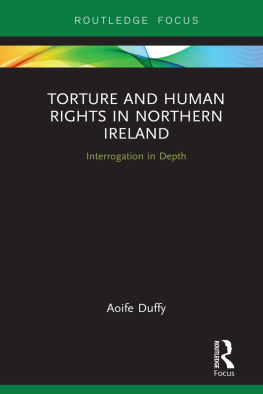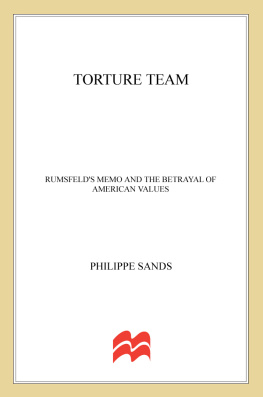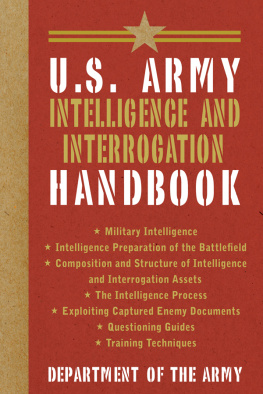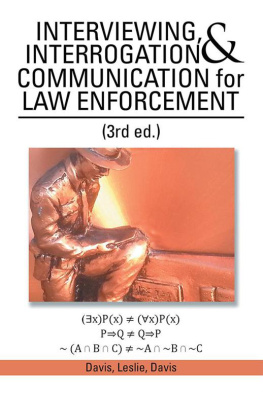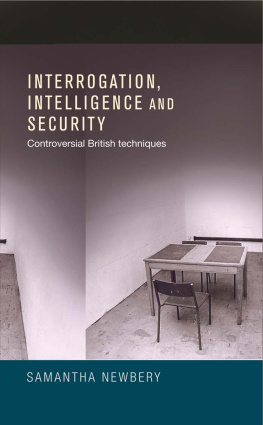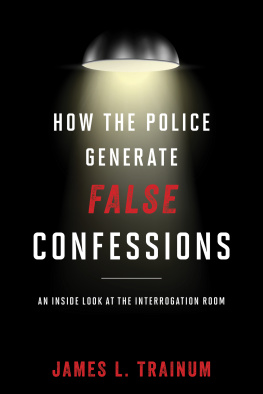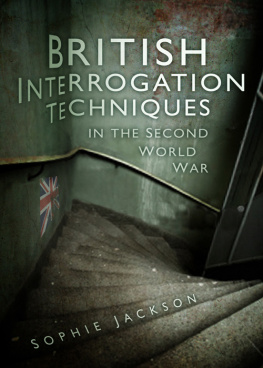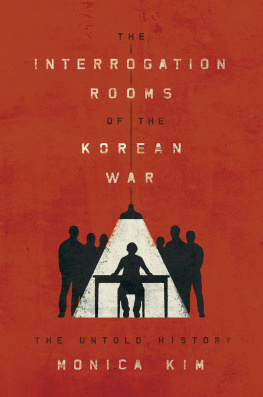Confessions of Guilt
Confessions of Guilt
From Torture to Miranda and Beyond
GEORGE C. THOMAS III
RICHARD A. LEO


Oxford University Press, Inc., publishes works that further
Oxford Universitys objective of excellence
in research, scholarship, and education.
Oxford New York
Auckland Cape Town Dar es Salaam Hong Kong Karachi
Kuala Lumpur Madrid Melbourne Mexico City Nairobi
New Delhi Shanghai Taipei Toronto
With offices in
Argentina Austria Brazil Chile Czech Republic France Greece
Guatemala Hungary Italy Japan Poland Portugal Singapore
South Korea Switzerland Thailand Turkey Ukraine Vietnam
Copyright 2012 by Oxford University Press
Published by Oxford University Press, Inc.
198 Madison Avenue, New York, New York 10016
www.oup.com
Oxford is a registered trademark of Oxford University Press
All rights reserved. No part of this publication may be reproduced,
stored in a retrieval system, or transmitted, in any form or by any means,
electronic, mechanical, photocopying, recording, or otherwise,
without the prior permission of Oxford University Press.
Library of Congress Cataloging-in-Publication Data
Thomas, George C. (George Conner), 1947
Confessions of guilt : from torture to Miranda and beyond / George C. Thomas III, Richard A. Leo.
p. cm.
Includes bibliographical references.
ISBN 978-0-19-533893-5 (hardcover : alk. paper) 1. Police questioningHistory.
2. Confession (Law) 3. Torture. I. Leo, Richard A., 1963II. Title.
HV8073.3.T46 2012
363.254dc23 2012003725
1 3 5 7 9 8 6 4 2
Printed in the United States of America
on acid-free paper
To Yale Kamisar
For His Inspiration
CONTENTS
PREFACE
In the course of writing this book, we surveyed sources from many eras and in varied databases. Our methodology was, roughly, as follows. For the oldest sources, up to and including the Year Books and the Old Bailey records to the end of the seventeenth century, we tried to include or cite every relevant source that we uncovered. As the records became more plentiful, we included representative samples of the various approaches that we found. In America, cases are scarce until the late nineteenth century, and often the early American cases we included are the only ones of that type that we found. But the early American cases follow the English cases of the period so closely that we believe the American cases we present accurately describe the law of the time.
To minimize footnotes, we did not use multiple citations to the same work if it is easy to find the referenced page from an earlier citation in the same paragraph.
We owe debts to many. Though we will undoubtedly omit some, we would be remiss if we did not name the following: Paul Axel-Lute, Deputy Director & Collection Development Librarian, Rutgers University, Newark, Law Library, for invaluable help locating and understanding many exotic and esoteric documents; Karin Johnsrud, Head of Reference, Fordham Law School Library, for help locating nineteenth-century New York documents; Maureen Cahill, Student Services Librarian at the University of Georgia Law Library, for help researching the origin of an 1861 Georgia statute regulating interrogation; Paul Brand and David Seipp, for help with the Year Book documents; Fabio Arcila, Al Garcia, Adam Gershowitz, Mark Godsey, Peter Honigsberg, David Johnson, Greg Mark, Dan Medwed, Wes Oliver, John Parry, Larry Rosenthal, and Mark Weiner for helpful comments, Jared Eber, Monica Kaul, Rachel Gruenstein, Dan LeCours, and Henry Snee, for research help; and Bill Hilger and Mary Ann Moore for technical help. We would also like to thank Martin Tulic for indexing this book, India Gray for copy-editing and James Cook of Oxford University Press for his editorial guidance throughout the project.
We thank four reviewers appointed by the publisherDonald Dripps, Mike Seidman, Andrew Taslitz, and an anonymous reviewerfor penetrating and extremely helpful comments. Finally, we thank three scholars and friends who blazed trails for us. Wes Oliver wrote extensively about a New York statute codified in 1829 that is crucial to our argument in ; while we ultimately disagree with the conclusion that he draws, his analysis helped sharpen ours. Bruce Smith alerted us to possibility that the English Indictable Offences Act of 1848 had the effect of facilitating the introduction of statements made to magistrates as well as informing the accused that he had a right not to answer the magistrates questions.
And a special thanks to our friend and mentor, Yale Kamisar. He blazed trails for those of us who have sought to understand police interrogation and the law of confessions. No one has been as influential or as wise.
Confessions of Guilt
CHAPTER 1
Introduction

Consider two interrogations separated by the Atlantic Ocean and 170 years. As described by the London Times, an English magistrate in 1832 examined a prisoner suspected of a horrid murder. Though not yet required by law, the magistrates clerk warned the prisoner that he was not bound to say anything to criminate himself. He was also cautioned that anything he had to say would be taken down in writing, and, if necessary, produced as evidence on his trial. The clerk told the suspect that the magistrates were ready to hear what he had to say if from any motive of unburdening his own conscience, or allaying the intense anxiety of the friends of the deceased, or from the desire of relieving those who might now be labouring under unjust accusation or suspicion.
In 2004, the New York Times described, in general terms, the interrogation of the so-called twentieth hijacker in the Guantnamo Bay prison camp. Interrogators at the prison camp received Pentagon approval to use special, harsher interrogation procedures on Mohamed al-Kahtani. A senior Pentagon civilian lawyer said there was some urgency to increasing the pressure on this detainee because he likely had information that the people at Guantanamo believed was important, not just about perhaps 9/11, but about future events.
The 2004 story did not contain details of the harsher interrogation procedures because they remained classified. A 2002 memo leaked to the press in 2006, however, said that the Justice Department had approved twenty interrogation practices that fell just short of those that might cause pain comparable to organ failure, impairment of bodily function or even death.
When using insects during interrogation, the interrogator tells the suspect that a stinging insect will be placed with him in a small closed box; instead, they put in the box a nonstinging insect, like a caterpillar. The box is so small he is not able to use his hands to resist the insect as it crawls on his skin. Water-boarding, which has received more attention, is described as follows:
[T]he individual is bound securely to an inclined bench. The individuals feet are generally elevated. A cloth is placed over the forehead and eyes. Water is then applied to the cloth in a controlled manner. As this is done, the cloth is lowered until it covers both the nose and mouth. Once the cloth is saturated and completely covers the mouth and nose, air flow is slightly restricted for 20 to 40 seconds due to the presence of the cloth. This causes an increase in carbon dioxide level in the individuals blood [that] stimulates increased efforts to breathe. This effort plus the cloth produces the perception of suffocation and incipient panic, i.e., the perception of drowning. The individual does not breathe any water into his lungs. During those 20 to 40 seconds, water is continuously applied from a height of twelve to twenty-four inches. After this period, the cloth is lifted, and the individual is allowed to breathe unimpeded for three or four full breaths. The sensation of drowning is immediately relieved by the removal of the cloth. The procedure may then be repeated. The water is usually applied from a canteen cup or small watering can with a spout. You have orally informed us that this procedure triggers an automatic physiological sensation of drowning that the individual cannot control even though he may be aware that he is in fact not drowning. You [the CIA] have also informed us [the Department of Justice] that it is likely that this procedure would not last more than 20 minutes in any one application.
Next page

